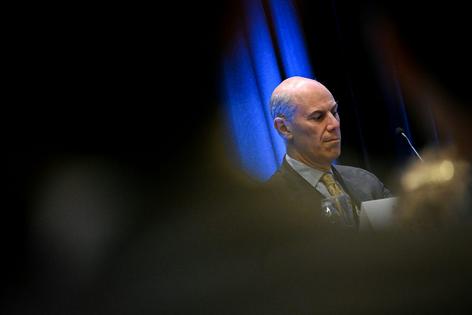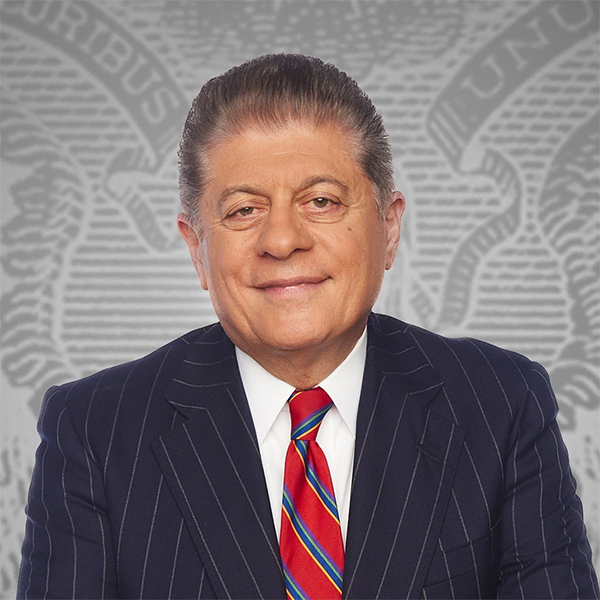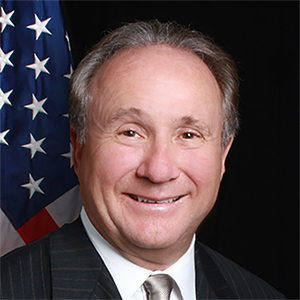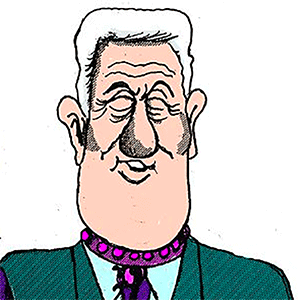Federal judge finds ‘probable cause’ to hold Trump administration in contempt – a legal scholar explains what this means
Published in Political News
A battle between the Trump administration and federal courts over the deportation of more than 100 immigrants to a prison in El Salvador intensified on April 16, 2025. U.S. District Court Judge James Boasberg released an opinion saying that he had “probable cause” to hold members of the administration in criminal contempt. That potentially dramatic action was in response to the White House disobeying Boasberg’s March 15 order to halt flights taking those immigrants to El Salvador.
“The Government’s actions on that day demonstrate a willful disregard for its Order,” the 46-page, April 16 opinion says.
Amy Lieberman, a politics editor at The Conversation U.S., spoke with Cassandra Burke Robertson, a legal scholar at Case Western Reserve University, to better understand Boasberg’s decision.
What exactly did Judge Boasberg do in this memorandum opinion?
Boasberg is saying there is evidence that the Trump administration has not complied with the court’s order to return the deportees, and that it may have intentionally flouted that order. He is making a finding of probable cause, meaning that the court needs to dig a little deeper to find out what happened and why the government, in this case, apparently did not comply with the court order.
It’s not too late for the government to comply. One option for the government is called “purging the contempt,” meaning the administration complies with the court order and brings the individuals who were sent to El Salvador back into U.S. custody.
If the administration does that, there will not be any further contempt proceedings. Normally, that would be attractive to the government in this position.
If the government chooses not to bring the detainees back into U.S. custody, then the probable cause finding means there is going to be an investigation overseen by the court.
But nobody has been found in contempt, yet.
The next step is taking evidence about what happened, including declarations from government officials. If needed, the court may also order, Boasberg wrote, “hearings with live witness testimony under oath or to depositions conducted by Plaintiffs.” The goal is to find out who ordered what, when and why. Then the court can decide whether someone within the government is responsible for flouting the court order.
Boasberg is giving the administration until April 23 to respond. By that date, the government must either, first, explain the steps it has taken to seek to return the individuals to U.S. custody. Or, second, it can identify the individuals who decided not to halt the transfer of the detainees out of U.S. custody, after the court ruled that they should not be transferred.
If Boasberg holds government officials in contempt, what happens next?
It is definitely not clear who Boasberg would hold in contempt. Part of what Boasberg is doing is figuring out who the relevant decision-makers are and what they might have ordered. The next step is to take discovery on those issues and to make a finding about who is responsible.
With rare exceptions, a contempt case is prosecuted in the same court whose order was violated. Under the Federal Rules of Criminal Procedure, a prosecutor is responsible for charging the defendants, once identified, with contempt. Those charges, like any criminal case, would need to be proved beyond a reasonable doubt. Issuing sanctions isn’t something Boasberg can just decide – there is a process.
Normally, a prosecutor in a case like this would be from the Department of Justice. In Boasberg’s opinion, he acknowledged that the Department of Justice might decline to prosecute. Federal rules allow the judge to appoint a different prosecutor if the government declines to prosecute or if “the interest of justice requires the appointment of another attorney.”
One big question is, can the president pardon contempt? Notably, Trump has done so before, when he pardoned Sheriff Joe Arpaio for defying a court order requiring him to stop his immigration patrols. However, some scholars have argued that such pardons may violate the Constitution’s separation of powers.
What is the punishment for contempt?
The two most common punishments would typically be a term of incarceration, or monetary sanctions. I suspect monetary sanctions are easier to enforce here than jail time.
It is so uncommon to hold any government official in contempt. Usually, the government would very quickly change direction to come into compliance to avoid the risk of any government official being sent to jail or any financial penalties being levied.
In the past, courts rarely needed to sentence government officials, because once there was a probable cause finding, the government would comply with what the judge was asking. Researcher Nicholas Perillo found “many examples of agencies shifting toward compliance on being faced with a mere contempt motion,” so that sanctions were not needed.
There aren’t a lot of cases where a judge has tried to enforce sanctions against a member of the government. In fact, only two federal officials – in 1951 – have ever been incarcerated for contempt, and they only spent a few hours in jail.
The Supreme Court found that the deportees’ case was not supposed to be heard in Boasberg’s court. Does Boasberg still have the authority to hold the government in contempt?
Boasberg had to address this, because the government also raised the issue. Boasberg points out the Supreme Court has historically said that when a party is faced with a court order, it has to comply with that court order until it gets relief on appeal. It cannot just ignore an order it believes a court should not have issued.
Here, the government had an obligation to comply with the order to return the Venezuelan immigrants sent to prison in El Salvador, even as it appealed the case to a higher court. And that is what is the issue here – that it failed to comply.
Have government officials ever been held in contempt of court before, and does this case differ from other cases?
It’s not a rare remedy in general–every year, many litigants are held in contempt and even jailed for refusing to comply with court orders. It’s especially common in child support and custody proceedings.
But it’s very rare for government officials to be held in contempt of court. One was the Arpaio case. Another case involved a Kentucky clerk who refused to issue marriage licenses for same-sex couples and was held in contempt. She spent six days in jail before she was released on the condition that she wouldn’t interfere with her deputies granting the licenses.
There has been talk of the U.S. edging into a constitutional crisis with this development. Does this order show that a crisis is already happening?
Any time the government fails to comply with a court order, I think we risk a constitutional crisis. But I believe that contempt proceedings are a way to show the strength of the Constitution. The contempt power has been around for as long as federal courts in the U.S. have been around, since 1789. This is fundamental to our constitutional system. If a litigant does not obey a court order, courts have power to enforce those orders.
This article is republished from The Conversation, a nonprofit, independent news organization bringing you facts and trustworthy analysis to help you make sense of our complex world. It was written by: Cassandra Burke Robertson, Case Western Reserve University
Read more:
ICE has broad power to detain and arrest noncitizens – but is still bound by constitutional limits
Who are immigrants to the US, where do they come from and where do they live?
Trump’s defiance of a federal court order fuels a constitutional crisis − a legal scholar unpacks the complicated case
Cassandra Burke Robertson does not work for, consult, own shares in or receive funding from any company or organization that would benefit from this article, and has disclosed no relevant affiliations beyond their academic appointment.


































































Comments